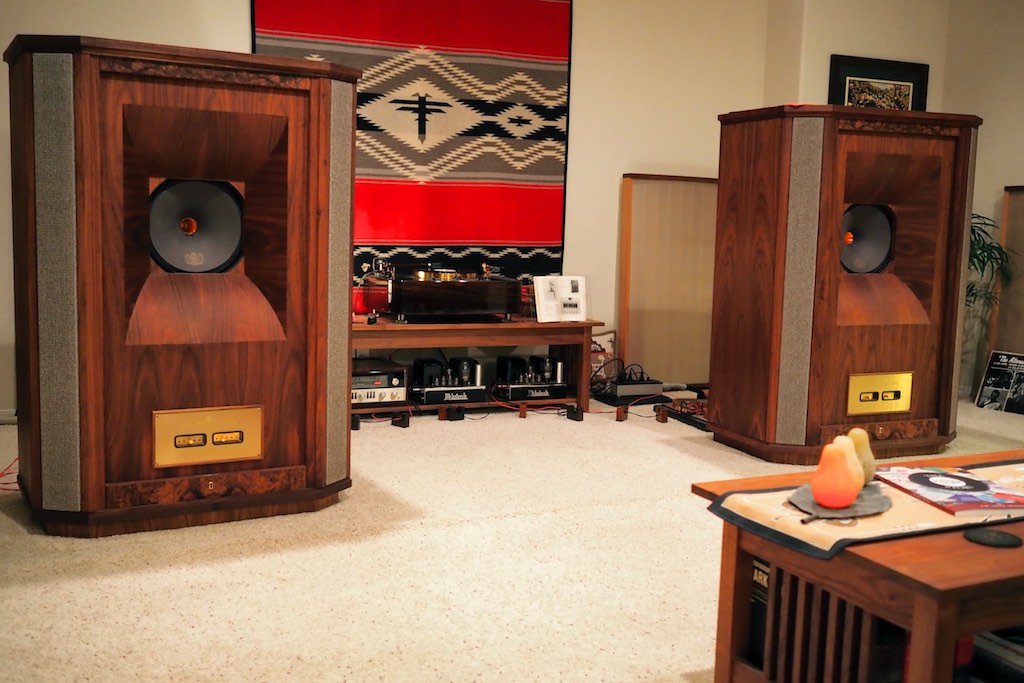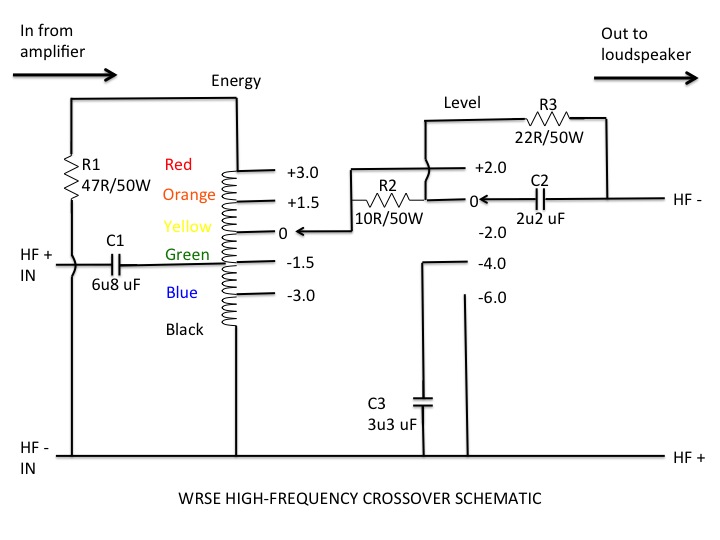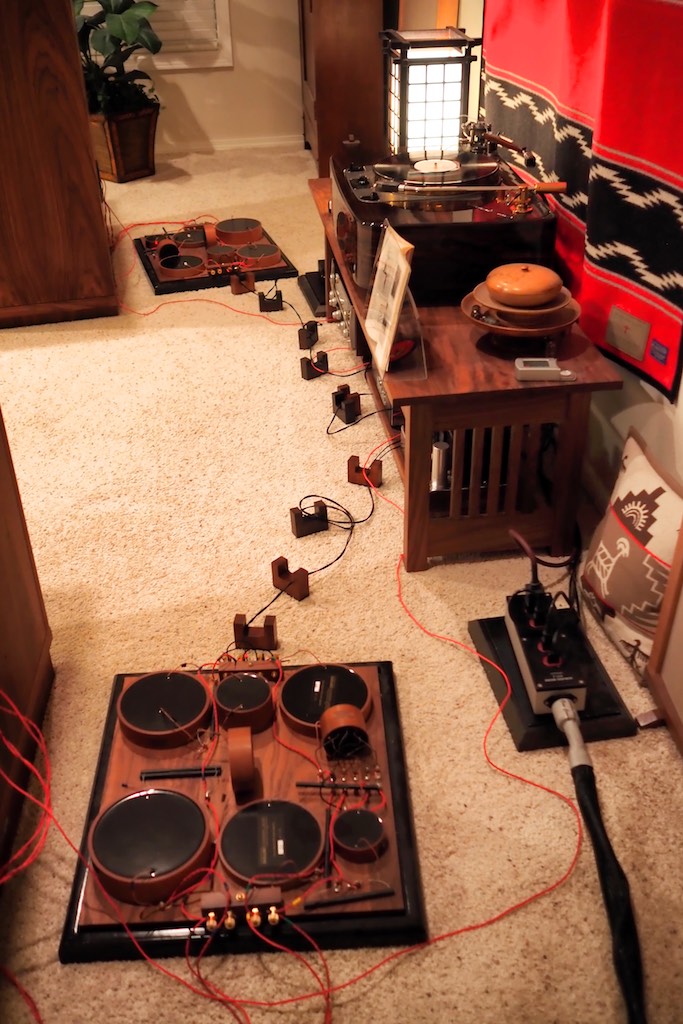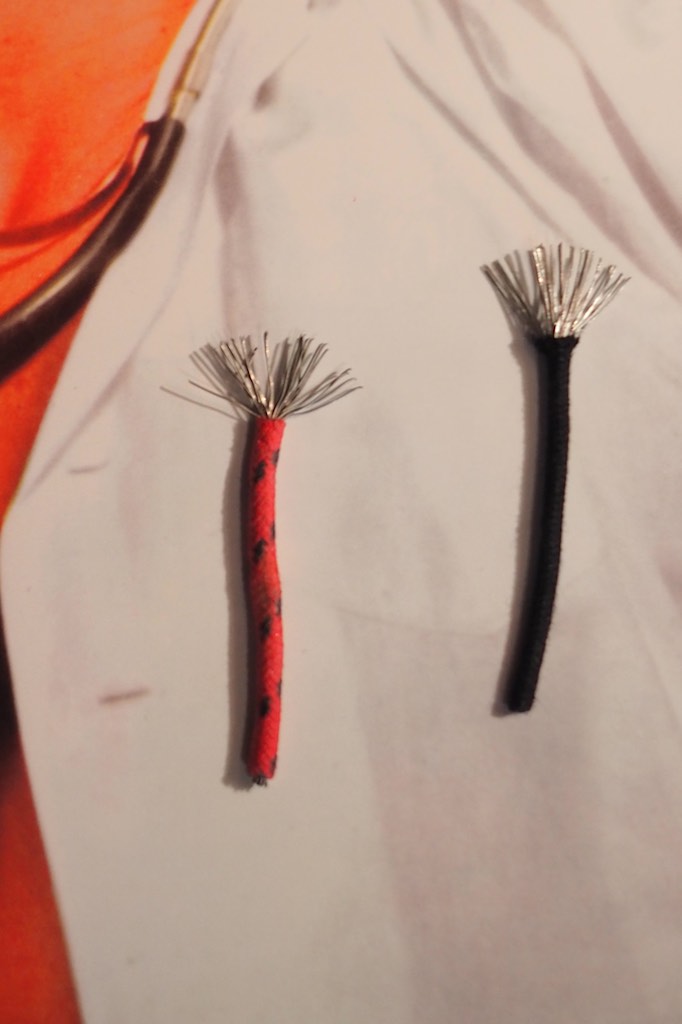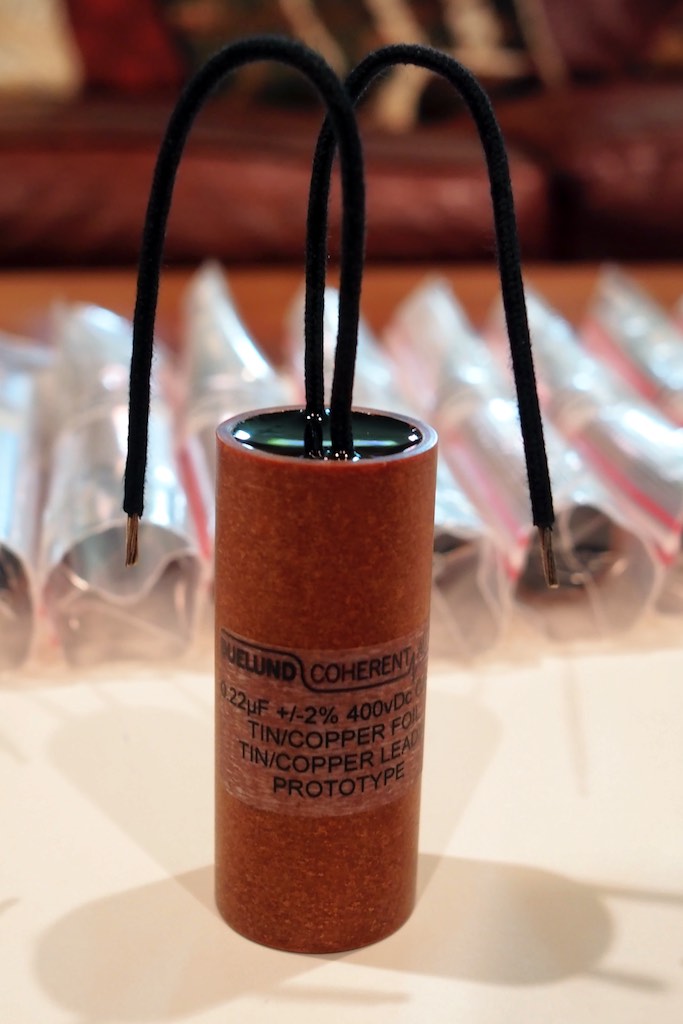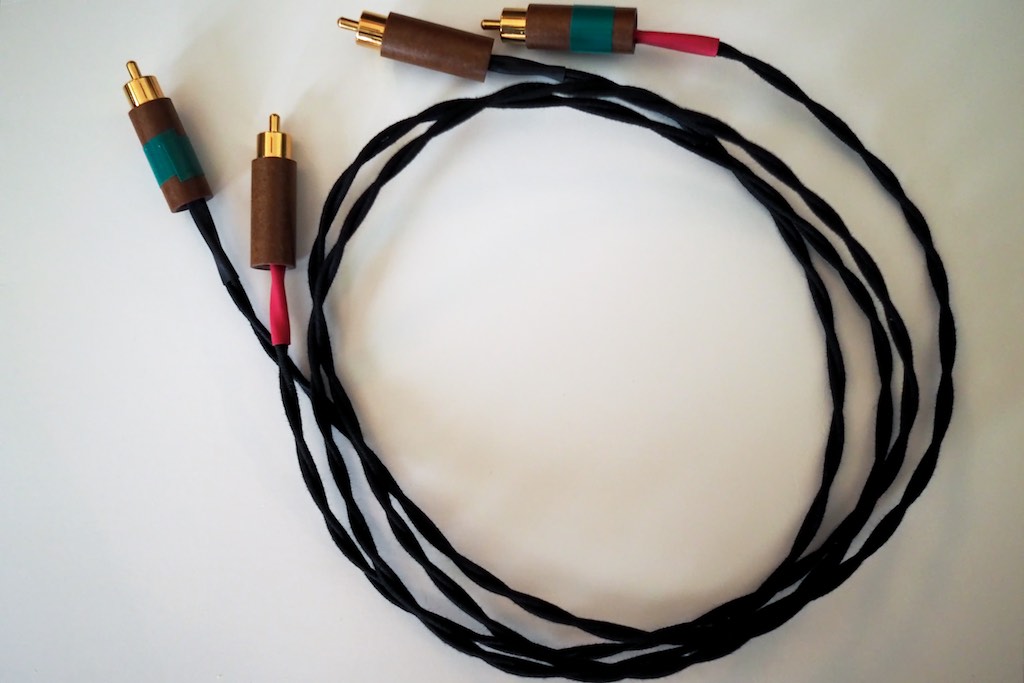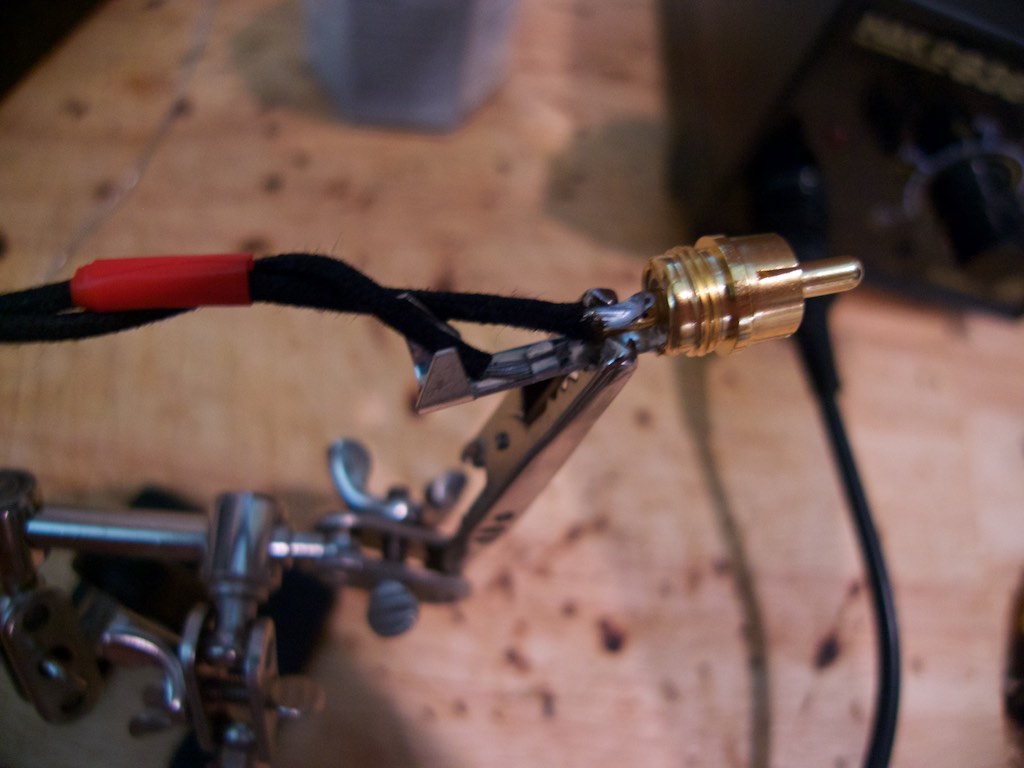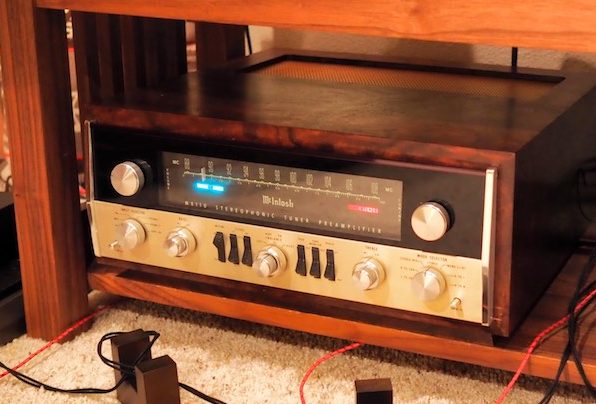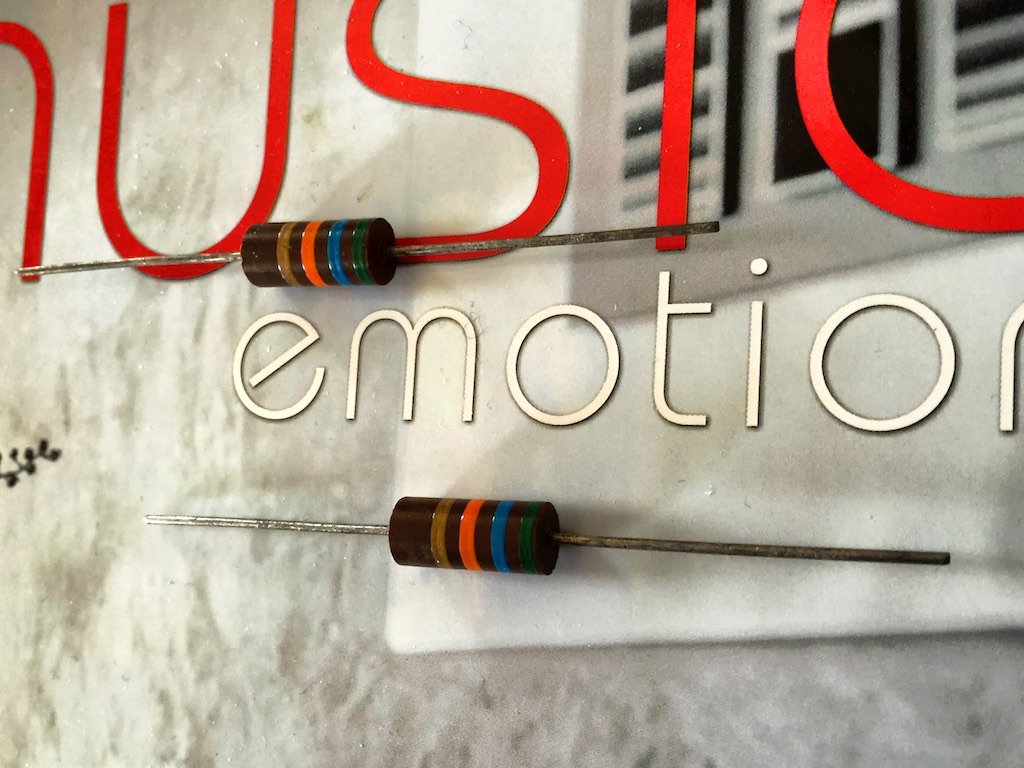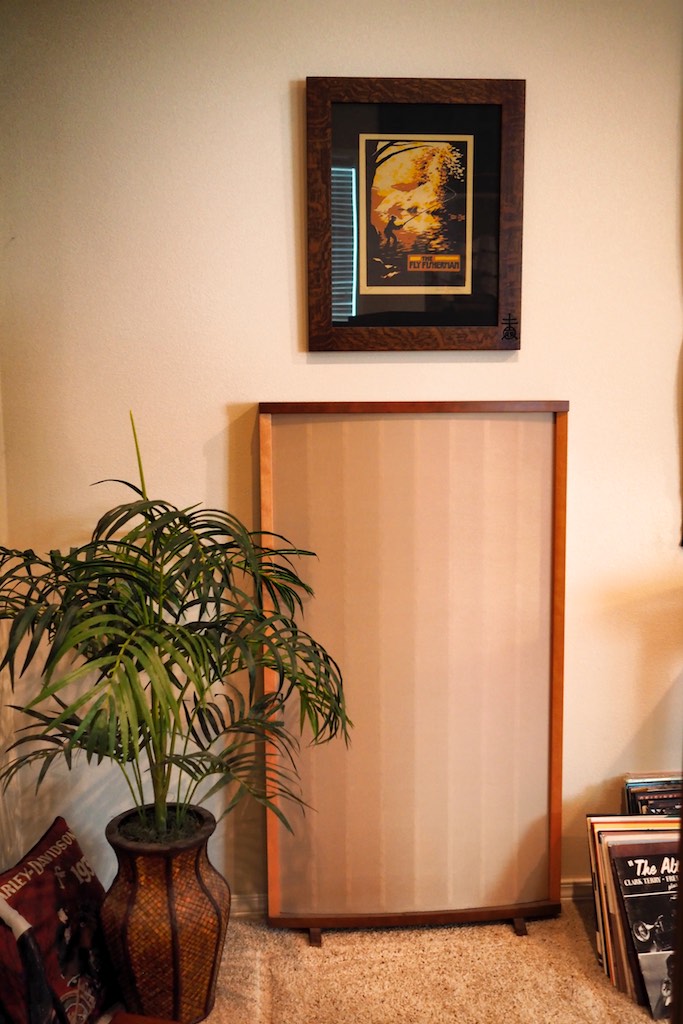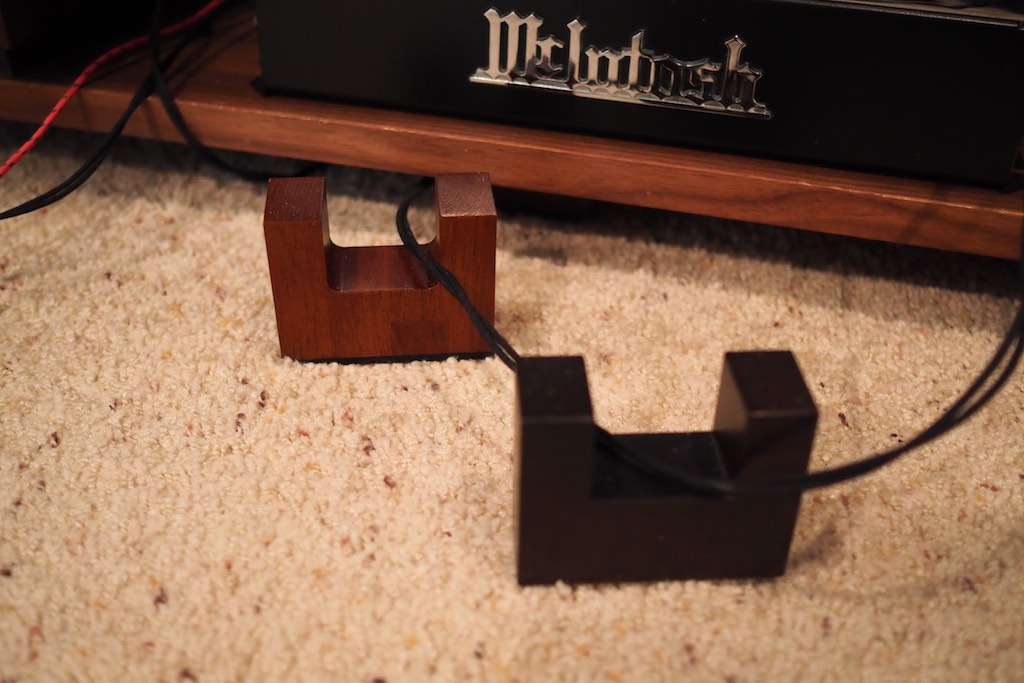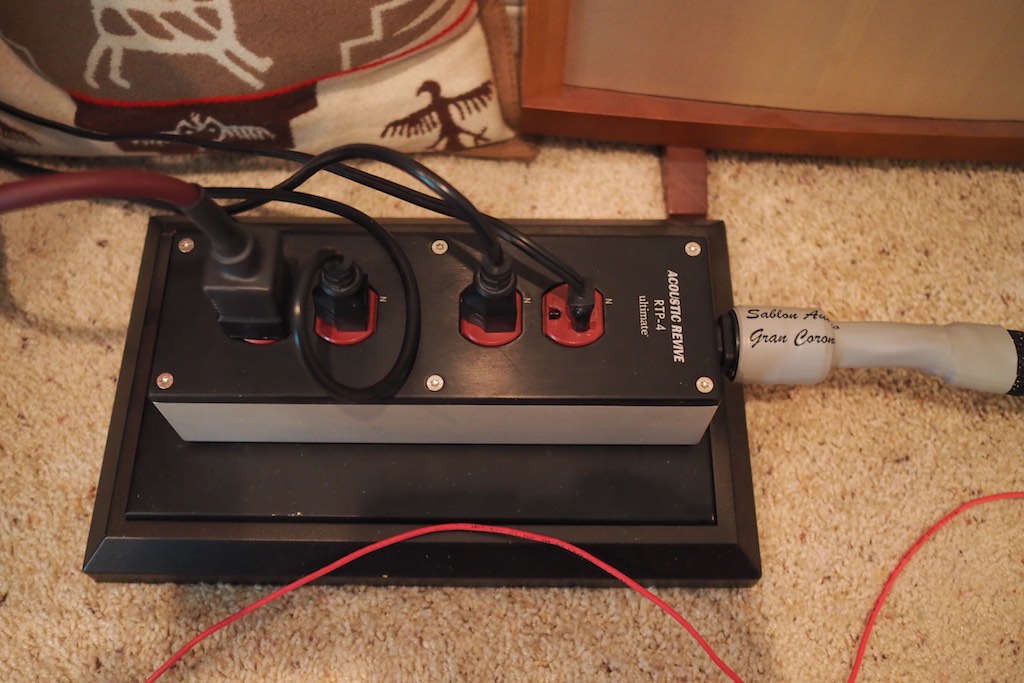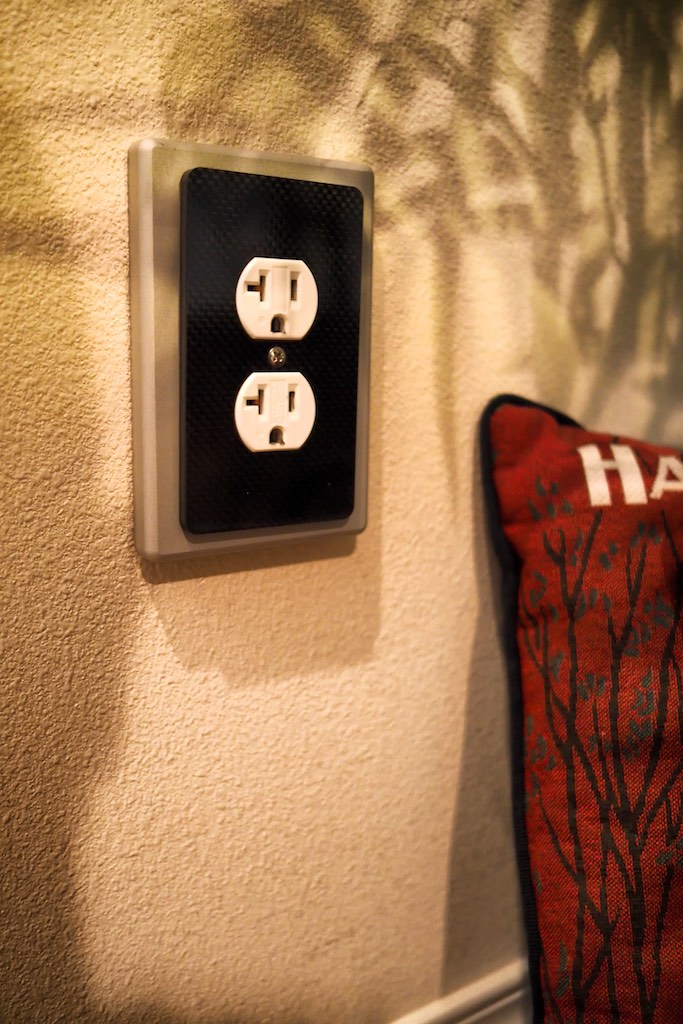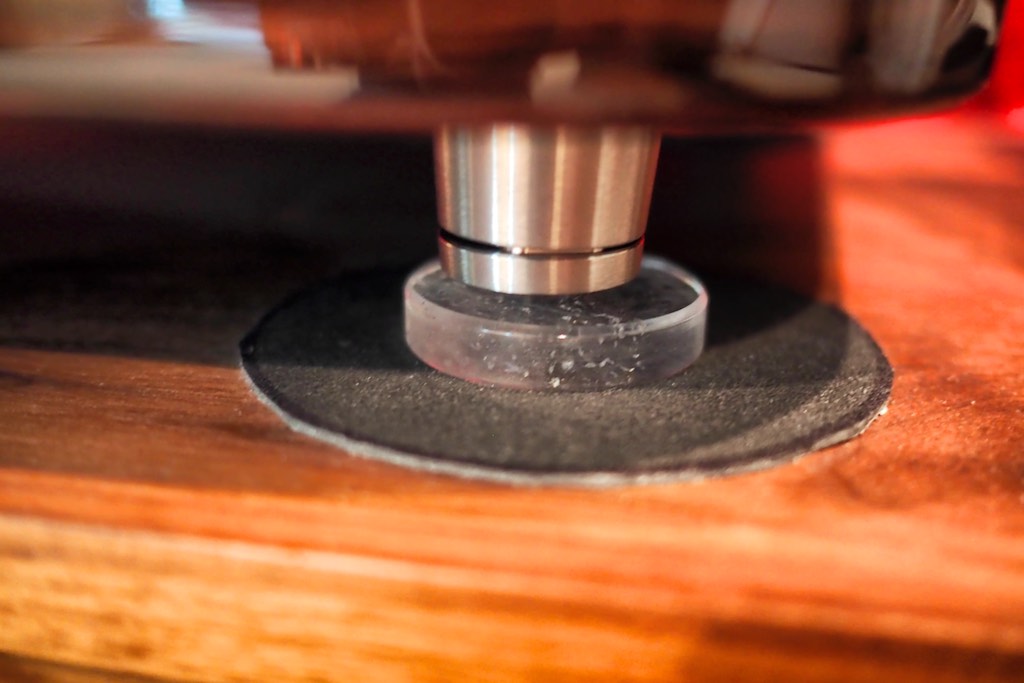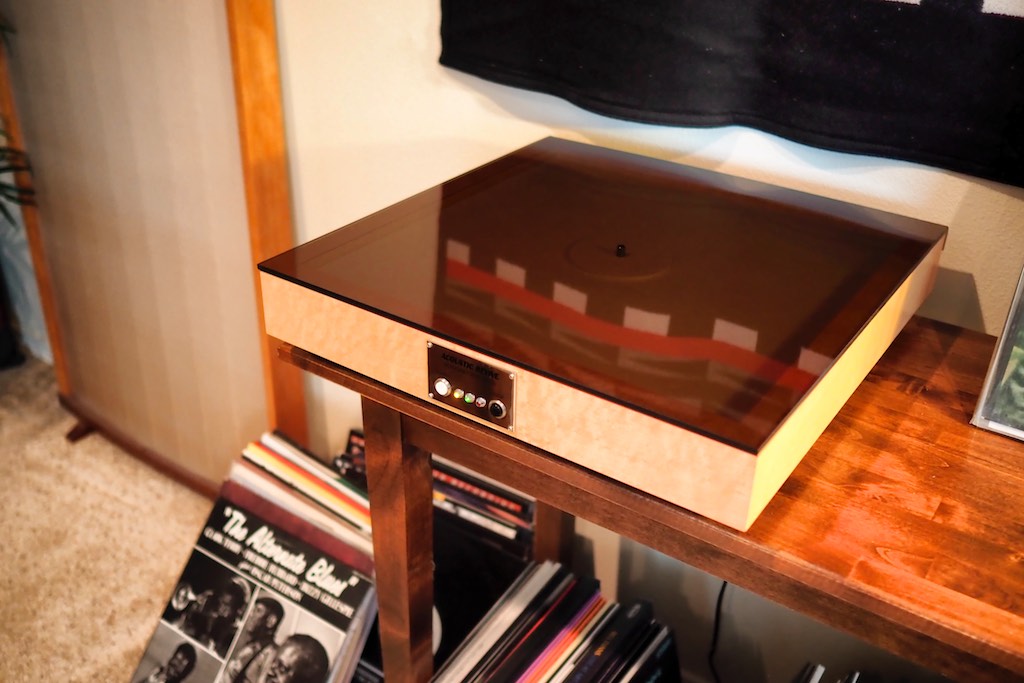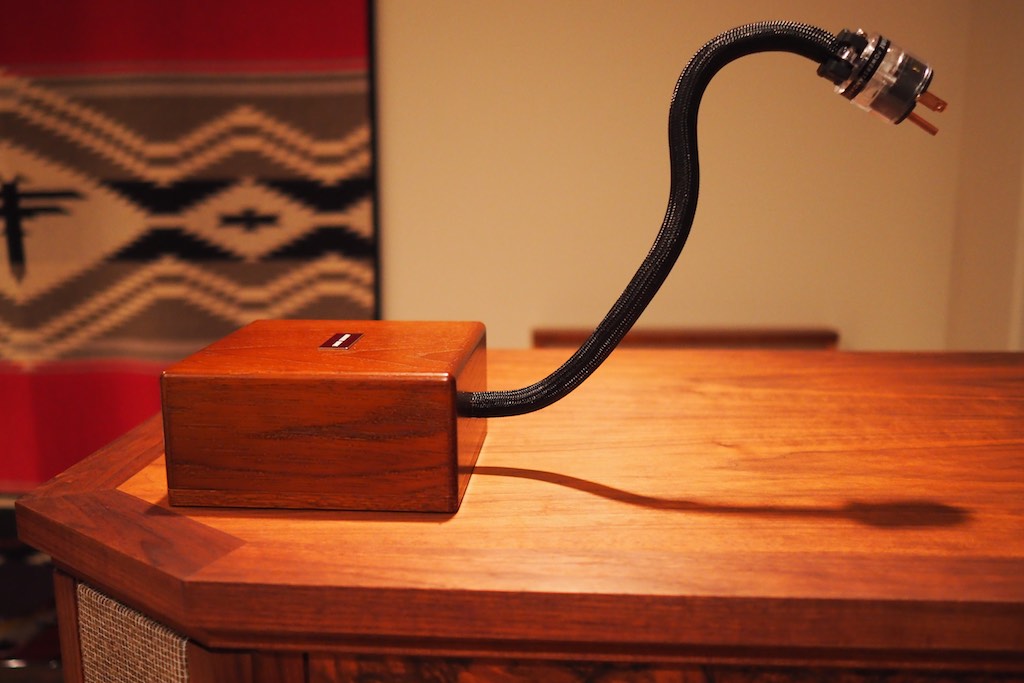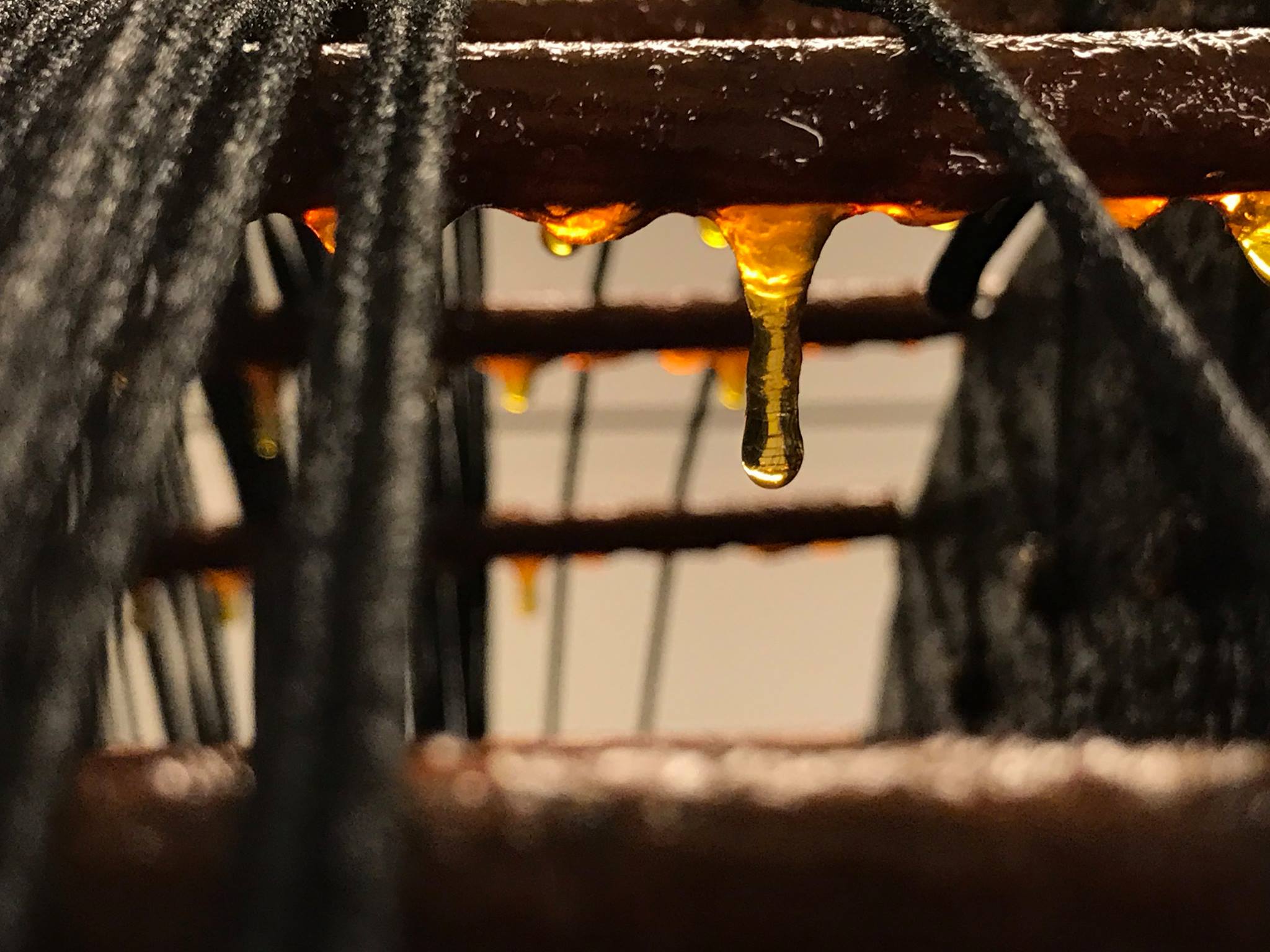It's bright and early on Saturday morning and I'm up drinking espresso, as my custom is lately, starting my mornings with two café allongés to get the morning rolling. It works!
My primary music system has achieved such a nice overall balance musically & sonically of late that I'm just sitting back, settling in, and enjoying the fruits of my labors for a while.
When my friend George stopped by recently, I showed him all the changes to my hi-fi over the past few years while he was working & living in China. It kinds of surprised me how much has changed in my system since George's last visit, and it sure is great to have George back home for good! Welcome home, George!
George's visit also gave me the idea that I should do a brief 'state-of-the-system' update for you, just like I did for George, to kick off the New Year of 2017!
I'll start with my pair of Tannoy Westminster Royal SE loudspeakers, which have had the stock Tannoy crossovers bypassed & replaced by a pair of external crossovers built up from the world-class and hand-crafted Duelund CAST components, in an ambitious crossover project I did with Frederik Carøe that showcased what is possible with his fantastic Duelund Coherent Audio components.
The improvement to my Westminster Royal SE loudspeakers using Duelund CAST components for the crossovers is astonishing, and the sky is the limit!
I started writing about the project back in 2013 for Positive Feedback, which you can read about here and here, and now in 2017, I still am amazed every day by my West's performance with their Duelund CAST crossovers.
I have continued to modify & refine, and just generally have fun, with the Duelund CAST crossover project since I first started writing about it for Positive Feedback back in 2013.
I amuse myself by variously swapping in & out capacitors in the 6.8uF C1 positions of the high-frequency circuit of the crossovers, with either pure silver, pure copper, or hybrid silver-copper Duelund CAST capacitors.
They're all awesome capacitors!
Hmm, I wonder if tinned-copper 6.8's will appear one day for their turn in C1?
It's amazing how much changing just the C1 capacitors can affect the overall sound & musicality of the crossovers. I think it's a rather wonderful learning experience, as well as jolly-good entertainment, to change the C1 caps, then fiddle around with the crossovers' treble energy & roll-off controls to see how it affects the overall sonics & musicality.
My work on the crossover project for my vintage Altec A5 Voice of the Theatre loudspeakers has given me some additional ideas for 'hot-rodding' the Duelund-Westminster crossovers that I have been musing about, and if the ideas turn out to have merit, then I'll tell you more about them in the future.
In 2015 I rewired my Westminster Royal SE's internally with the now unavailable vintage Western Electric WE16GA tinned-copper wire, as well as their external Duelund CAST crossovers.
I was introduced to the considerable & unique musical & sonic charms of using tinned-copper signal conductors by Yazaki-san, which he referred to as having a 'Real Sound' tonal balance.
In another refinement, you can see the Duelund DCA16GA tinned-copper wire that was inspired by, and has replaced, the Western Electric WE15GA wire I was using as speaker cables.
You can see the DCA16GA in the photos above where it is routed through Acoustic Revive cable lifts from crossovers to amplifiers.
Fortunately for you and me, a little serendipity played out nicely when Frederik Carøe took an interest in making a contemporary Duelund version of the famed and now extinct Western Electric WE16GA.
I reverse engineered the Western Electric tinned-copper conductors for Frederik, and Frederik improved upon the Western Electric design by replacing its combination fabric-plastic dielectric with an all natural oil-soaked and baked cotton dielectric, which improved upon the venerable Western Electric's already wonderful tonal qualities.
You can read more about the remarkable & affordable Duelund DCA16GA here.
I am very pleased to say that the Duelund DCA16GA tinned-copper 'vintage tone' wire has been a huge success for Frederik, and it continues to sell out as fast as he can make it!
The Duelund DCA16GA tinned-copper speaker cables connect my Duelund CAST crossovers to my 'Real Sound' hot-rodded vintage McIntosh MC30 monaural amplifiers.
You can read more about the vintage McIntosh MC30 monaural amplifiers here, and about the Yazaki-san inspired 'Real Sound' hot-rod project we did for them here.
As with the Duelund CAST crossover project for my Westminster Royal SE's, I've continued to modify & refine my 'Real Sound' modified vintage MC30's through the addition of vintage NOS Allen Bradley carbon composition resistors to replace the metal film resistors we used in the project, which resulted in an even more 'real' presentation of the musical tone from those vintage wonders.
My modified vintage McIntosh MC30 monaural amplifiers remain my favorite amplifiers of all time!
Incidentally, the experimentation I have been doing with the innovative prototype Duelund CAST tinned-copper capacitors, and its extremely positive results, has led me to wonder about adding a couple of their production cousins of appropriate values into my vintage McIntosh MC30 monaural amplifiers in key positions.
I have a hunch that a couple of Duelund CAST tinned-copper capacitors in the MC30's would be a home run both musically & sonically!
Definitely something to think about for the New Year of 2017!
My vintage MC30 monaural amplifiers are connected to my vintage McIntosh MX110Z tuner-preamplifier with Duelund DCA16GA interconnects.
I built a pair of Duelund DCA16GA tinned-copper interconnects to compare to my reference Belden 8402 microphone cable tinned-copper interconnects (which were also introduced to me for their 'Real Sound' quality by Yazaki-san), and the results were so spectacular that they ended up replacing the very enjoyable Belden 8402 interconnects I was using in the amp-to-preamp position.
The presentation of the Duelund DCA16GA interconnects is extremely vivid from a tone color & physical presence perspective. They also provide unmatched naturalness of timbral textures, incredible dynamic realism, and a lot of musical nuance and 'touch' of the musicians upon their instruments. They have a way of making the music come alive like no other interconnects in my experience, and as such they have quickly become my favorite interconnects for their superb combination of sonics & musicality.
There is a couple of caveats to keep in mind, however, as the Duelund DCA16GA will need to be shielded for some interconnect applications, and it may very well be too vivid in some systems that are already forward sounding (the Belden 8402 is a great alternative if your system is too forward for the DCA16GA).
To get the best from the Duelund DCA16GA you need to let it go through its run-in cycle of about 100 hours, where it can initially sound ragged & forward, and then after it smooths out and gets on song, leave it alone!
On the other end of of my Duelund DCA16GA interconnects is my beloved vintage McIntosh MX110Z tuner-preamplifier, which I hugely enjoy.
I tried modifying my vintage MX110Z in a similar 'Real Sound' fashion as I did with my vintage McIntosh MC30 monaural amplifiers, but the results were largely disappointing, as the improvements I gained in one aspect of its performance I lost in another, and ultimately I thought my stock MX110Z had a better overall balance of musicality & sonics.
I remember chatting with mastering engineer, hi-fi nut & music lover, Steve Hoffman, on Facebook about his experiences with his MX110Z tuner-preamplifier. Steve told me the MX110Z is also a favorite of his, and he made the comment that he'd never heard a modification to an MX110Z that actually improved it over a stock version.
I was beginning to think Steve was right, that you might not be able to improve on a stock vintage MX110Z, but I thought I would persevere for a while and see what resulted.
The first thing I did was strip out all the metal film resistors that we put into the MX110Z and replace them with vintage NOS Allen Bradley carbon composition resistors.
That helped in terms of more natural tonality, but it was not enough.
One of the modifications that I kept experimenting with was to the first stage cathode follower of the high level input, where I replaced two key pairs of 0.1uF capacitors at C93 & C95 and C94 & C96 with various highly-regarded new and vintage 0.22uF capacitors in an attempt to improve upon the sound of the stock MX110Z.
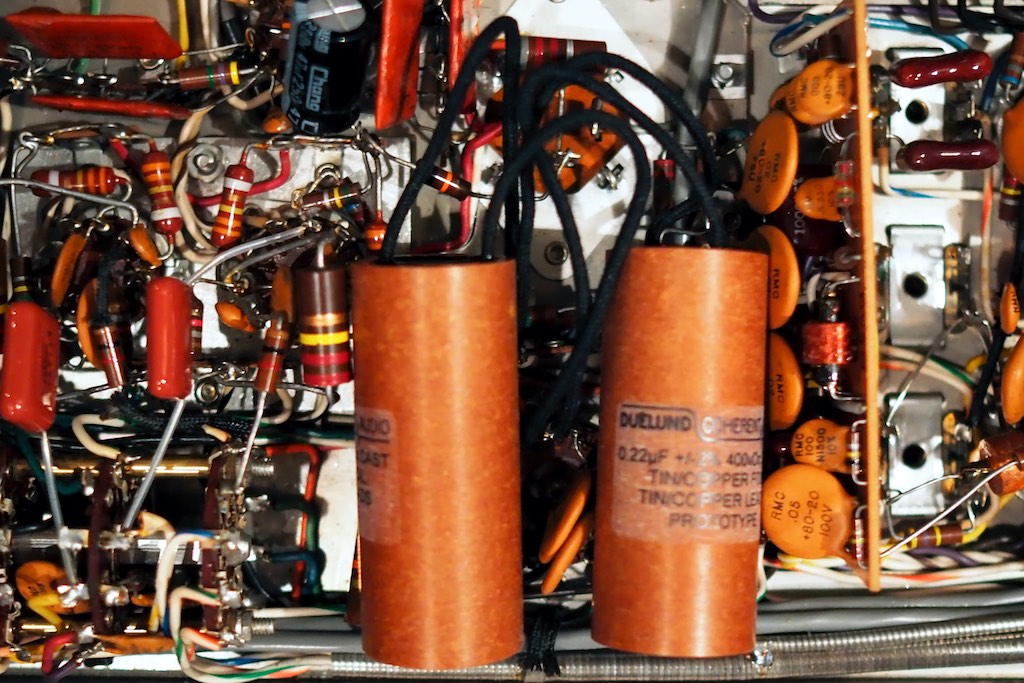
A pair of prototype 0.22uF Duelund CAST Sn-Cu capacitors that I've soldered into my vintage MX110Z McIntosh tuner-preamplifier.
I was not entirely happy with my capacitor swapping results until I tried installing a pair of the prototype 0.22uF Duelund CAST tinned-copper capacitors that Frederik had sent me. The Duelund CAST tinned-copper capacitors completely transformed my MX110Z!
The hand-crafted prototype 0.22uF Duelund CAST tinned-copper capacitors were so much better than the other 0.22uF capacitors I tried you couldn't even see second place in the rear-view mirror, the Duelund's are simply in a class by themselves.
The downsides of the Duelund's are that they're expensive, and they're also big, meaning they won't fit everywhere you'd like to put them.
But if it is the very best performance you're after, the Duelund CAST tinned-copper capacitors are it, and Parts ConneXion has some values in stock now here, but no 0.22uF's yet, so you'll have to be patient if you want those.
After hearing what is possible with the Duelund's, and given their extraordinary tonality, it made me think it might be possible to use them to do a variation of the MX110Z hot-rod power supply modifications Yazaki-san, Ron-san, and I had tried earlier that didn't work out.
It conveniently turns out that I could use a pair of prototype 0.22uF Duelund CAST tinned-copper capacitors if they will fit, and it is quite literally a big if as the Duelund's jumbo size may make them too large to fit into the available space inside the MX110Z.
I had planned on putting the rest of the 0.22uF Duelund CAST tinned-copper capacitors I had on hand into the crossovers of my Altec A5 Voice of the Theatre loudspeakers, but I decided to hold off to see if they might fit in the MX110z.
Stay tuned on this one, it way turn into a 2017 adventure!
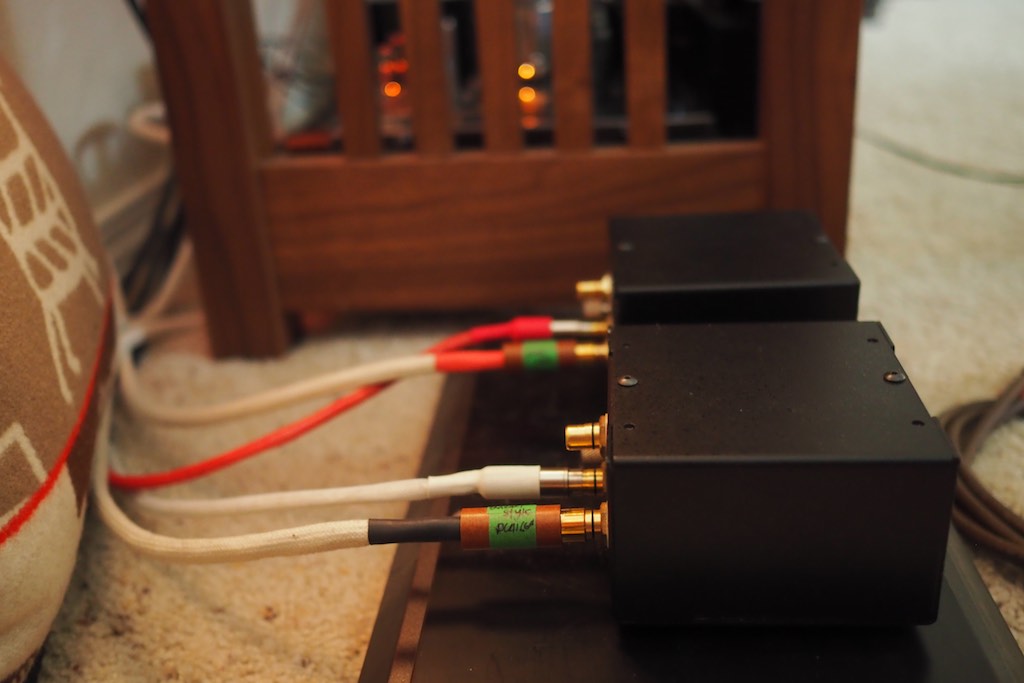
Intact Audio monaural SUTs with shielded Duelund DCA16GA interconnects from Chris at Parts ConneXion.
My MX110Z is connected to pair of superbly musical monaural Intact Audio step-up transformers via a pair of shielded Duelund DCA16GA interconnects (shield attached at source end only) that Chris at Parts ConneXion made for me, and he'll make some for you too if you ask him nicely.
As we continue to move upstream in the system the next thing we encounter is my Garrard Project turntable, which you can read more about here.
Like everything else in my main music system, the Garrard Project I wrote about for Positive Feedback in 2015 has continued to evolve.
I replaced the Schick tonearm I used for stereo playback with the Pete Riggle Audio Engineering 12.5-inch Woody SPU tonearm that I wrote about in Positive Feedback Issue 88, which was brought about because the bespoke Woody SPU outperformed my Schick tonearm to an astonishing degree when using my Ortofon SPU Classic GM MkII stereo phono cartridge.
Somewhat perplexingly, when used with my Ortofon SPU Mono CG 25 Di MkII mono phono cartridge, the Woody SPU couldn't perform the same magic trick, and the Schick tonearm slightly outperformed it in that application, so my second Schick stayed put for mono cartridge use.
Not everyone will cotton to the 12.5-inch Woody SPU's rustic and rough-hewn appearance, but if it is the best sound out of stereo SPU cartridge you're after, the Woody SPU is the way to get it.
Incidentally, one project I am thinking about for 2017 is a rewire of the Schick tonearm with Frederik's new Duelund DCA20GA tinned-copper wire when it becomes available.
After hearing the nice difference Western Electric tinned-copper headshell wires from Yazaki-san made with my Schick it gives me hope for a good outcome, although my previous rewire of the Schick tonearm during the Woody SPU review suggests the Schick may be somewhat wire insensitive. We'll see what happens!
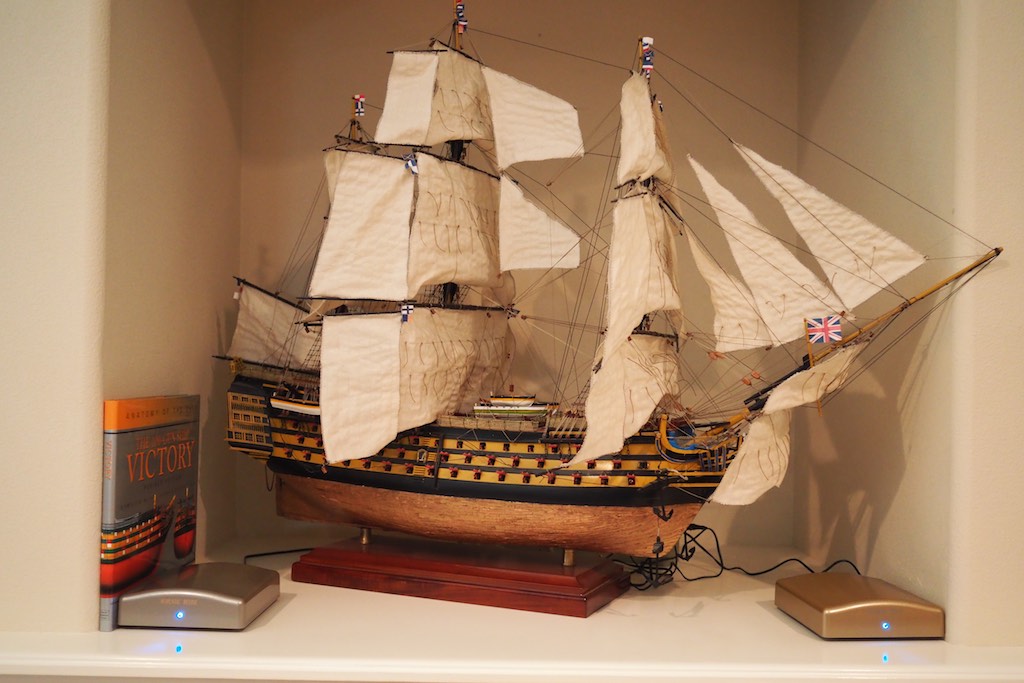
I have Acoustic Revive RR-77 and RR-888 Schumann wave generators in the alcove above the fireplace in my living/listening room.
I would be remiss if I didn't mention the accessories I use in my main listening system, as they make for a really nice improvement.
I use two Acoustic Revive Schumann wave generators, an RR-77 and RR-888, that sit stealthily in the alcove above my fireplace, which provides just the perfect amount of Schumann conditioning effect in my main listening room.
If you look closely in all the photos, you'll notice that I have three Acoustic Revive RWL-3 acoustic panels in my room, one behind each Westminster Royal SE loudspeaker, and one on the right side-wall (above).
If you look closely at the accompanying photos, you'll also see a bunch of the Acoustic Revive RCI-3H cable lifts under my wires wherever possible. I like 'em!
I have all my equipment plugged into an Acoustic Revive RPT-4 outlet box sitting atop an Acoustic Revive Underboard isolation device (my monaural Intact Audio SUT's also sit atop an AR Underboard), and the vital connection to AC power is via a superb Sablon Audio Gran Corona power cable.
I use Oyaide R-0 AC outlets mounted into Acoustic Revive CB-1DB Receptacle Base Plates with CFRP-1F Carbon Fiber Outlet Plates for the in-wall AC connections of my system, which makes for a really stable and good sounding AC connection.
I also use an Acoustic Revive CS-F2 Outlet Stabilizer in one outlet (not pictured).
I use the Acoustic Revive RIQ-5010 / RIQ-5010W quartz discs underneath my turntable & vintage McIntosh MX110Z preamplifier.
I also use the absolutely gorgeous Acoustic Revive RL-30MKⅢ to demagnetize my records, and incidentally you can use it to demagnetize cables or anything else you can fit inside it, including CD's and DVD's.
Finally, I also use the impressive Acoustic Revive RPC-1 Power Supply Conditioner that filters the in-wall AC before it gets into your system, about which a full review will be forthcoming in due time.
That's my state-of-the-system update for January 2017. I hope you enjoyed the update, and I hope it gives you some ideas for some new audio adventures of your own in 2017!
Update from Frederik on the production Duelund CAST 0.22uF tinned-copper capacitors & the upcoming Duelund DCA20GA tinned-copper wire:
After Frederik saw this post he told me that "For the record, the production version will be smaller. I had to use the foil we had for the prototypes. It is actually too large for a 0.22uF, so we should save a little space on the production items."
Frederik also told me that the DCA20GA should begin its oil impregnation process this week, so we should be hearing more about that in the near future as well.
Update x 2: Frederik sent me the photo above of the oil-impregnation process for the DCA20GA, and told me that DCA20GA will be shipping my this week with a little luck. Woo hoo!
As always, thanks for stopping by, and from my home to yours, may the tone be with you!





